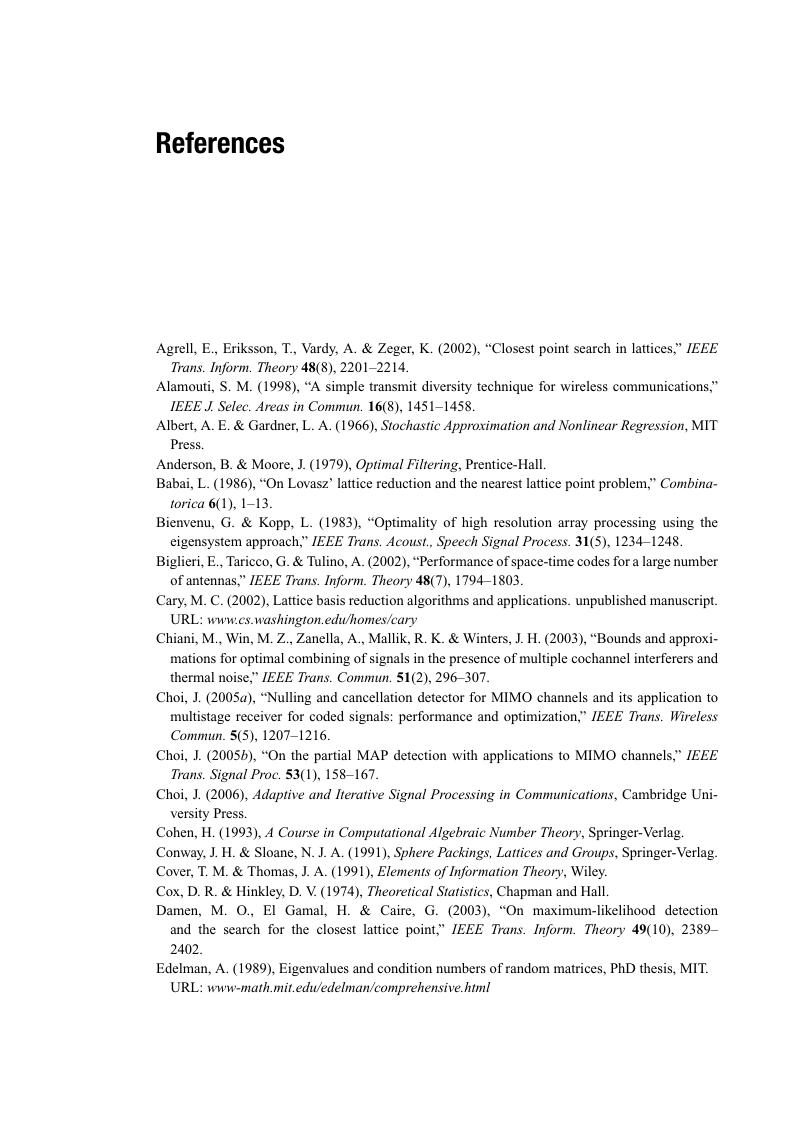Book contents
- Frontmatter
- Contents
- Preface
- List of symbols
- List of abbreviations
- 1 Introduction
- 2 Fundamentals of detection theory
- 3 Fundamentals of estimation theory
- 4 Optimal combining: single-signal
- 5 Array signal processing and smart antenna
- 6 Optimal combining: multiple-signal
- 7 Multiple signal detection in vector space: MIMO detection
- 8 MIMO detection with successive interference cancellation
- 9 Lattice-reduction-aided MIMO detection
- 10 Analysis of LR-based MIMO detection
- Appendix 1 Review of signals and systems
- Appendix 2 A brief review of entropy, mutual information, and channel capacity
- Appendix 3 Important properties of matrices and vectors
- Appendix 4 Lattice theory
- References
- Index
- References
References
Published online by Cambridge University Press: 05 July 2014
- Frontmatter
- Contents
- Preface
- List of symbols
- List of abbreviations
- 1 Introduction
- 2 Fundamentals of detection theory
- 3 Fundamentals of estimation theory
- 4 Optimal combining: single-signal
- 5 Array signal processing and smart antenna
- 6 Optimal combining: multiple-signal
- 7 Multiple signal detection in vector space: MIMO detection
- 8 MIMO detection with successive interference cancellation
- 9 Lattice-reduction-aided MIMO detection
- 10 Analysis of LR-based MIMO detection
- Appendix 1 Review of signals and systems
- Appendix 2 A brief review of entropy, mutual information, and channel capacity
- Appendix 3 Important properties of matrices and vectors
- Appendix 4 Lattice theory
- References
- Index
- References
Summary

- Type
- Chapter
- Information
- Optimal Combining and DetectionStatistical Signal Processing for Communications, pp. 322 - 327Publisher: Cambridge University PressPrint publication year: 2010



